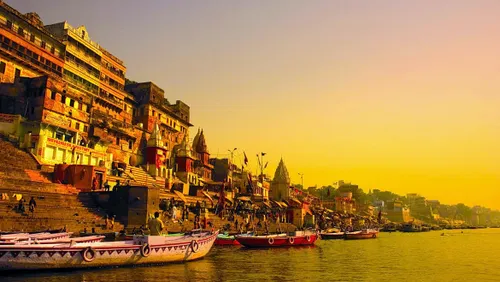
Man Mahal: The Regal Abode of Kota
Nestled in the vibrant city of Kota, Rajasthan, Man Mahal is a historic palace that stands as a testament to the architectural brilliance and cultural heritage of the region. Known for its exquisite design and historical significance, Man Mahal offers visitors a unique glimpse into the grandeur of the Rajput era. Here’s a comprehensive look at Man Mahal, covering its history, architectural features, and what makes it a noteworthy destination.
A Historical Overview
Man Mahal was built in the 19th century by the Kota royal family. The palace served as a residence for the rulers of Kota and was designed to reflect their wealth and status. The construction of Man Mahal marks a significant period in Kota’s history, showcasing the artistic and architectural achievements of the time.
The palace was constructed during the reign of Maharaja Man Singh, from whom it derives its name. The building reflects the opulence and grandeur of the Kota dynasty and has played a prominent role in the region’s royal history.
Architectural Splendor
Design and Structure
Man Mahal is renowned for its distinctive architectural style, which combines traditional Rajput design elements with Mughal influences. The palace’s design is characterized by its ornate carvings, expansive courtyards, and elegant interiors.
Facade and Entrance: The palace features a grand facade with intricate carvings and decorative motifs. The entrance is marked by an impressive archway and ornamental details that reflect the artistic craftsmanship of the era.
Interior Elegance: Inside, Man Mahal boasts richly decorated rooms and suites featuring traditional furnishings, intricate woodwork, and elegant fabrics. The interiors are designed to reflect the opulence of the Kota royal family, with high ceilings and detailed artwork.
Courtyards and Gardens: The palace includes several courtyards and gardens, each meticulously designed to enhance the palace’s overall grandeur. These spaces feature manicured lawns, decorative fountains, and lush greenery.
Notable Features
Intricate Carvings: The palace’s facade and interiors are adorned with detailed carvings and decorative elements, showcasing the craftsmanship and artistic talent of the period.
Royal Artifacts: Man Mahal houses a collection of royal artifacts, including antique furniture, traditional textiles, and historical memorabilia. These items provide valuable insights into the lifestyle and culture of the Kota royal family.
Scenic Views: The palace’s elevated position offers stunning views of the surrounding city and landscape, adding to its charm and appeal.
Cultural and Historical Significance
Man Mahal holds significant cultural and historical value as a symbol of Kota’s royal heritage. It represents the grandeur and sophistication of the Kota dynasty and provides valuable insights into the region’s rich history and artistic achievements.
Key Attractions
Architectural Elegance: The palace’s unique blend of Rajput and Mughal architectural styles highlights the artistic achievements of the time. Its intricate carvings and elaborate interiors are particularly noteworthy.
Royal Heritage: Exploring Man Mahal offers a glimpse into the regal lifestyle of the Kota royal family. The palace’s history and artifacts reflect the opulence and cultural richness of the region.
Cultural Insights: The palace’s design and artifacts provide valuable insights into the cultural and artistic heritage of Kota, enriching visitors’ understanding of the region’s past.
Tips for Visitors
Timing: Man Mahal is generally open to visitors throughout the week. It’s advisable to check specific visiting hours and any special events before planning your visit.
Dress Code: Wear comfortable and respectful attire, considering the cultural and historical significance of the site. Comfortable footwear is recommended due to the walking involved.
Guided Tours: Hiring a local guide can enhance your visit by providing detailed information about the palace’s history, architecture, and significance. Guides can offer valuable insights and anecdotes that bring the palace’s history to life.
Photography: Photography is usually allowed, but be mindful of any restrictions, especially inside specific areas of the palace. The palace’s exterior and gardens provide excellent photo opportunities.
Man Mahal in Kota is a captivating destination that offers a glimpse into the grandeur and elegance of Rajasthan’s royal heritage. Its distinctive architectural style, richly decorated interiors, and historical significance make it a memorable and enriching experience for visitors. As you explore its majestic courtyards, admire its artistic details, and immerse yourself in its regal history, you’ll gain a deeper appreciation for the opulence and charm of Kota’s royal past. A visit to Man Mahal promises an unforgettable journey through one of Rajasthan’s most iconic and historic landmarks.
